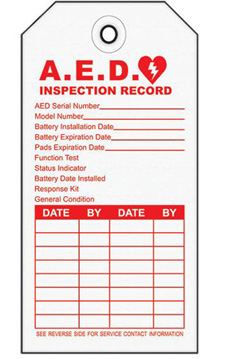



Find all of your laboratory and workplace safety supplies at Safety Emporium!
 Clastogen |
 Glossary Index |
 Combustible |
| MSDS Topics |
Free Sites | FAQ's | Regulations | Glossary | Software | Suppliers |
| Books | Forum | Poll | Fun stuff | Quiz | Store | |
| Understand your MSDS with the MS-Demystifier | Search ALL our MSDS info | |||||

Secure controlled substances, fire extinguishers, and other vital items with tamper and security seals from Safety Emporium.
A coma is a deep and prolonged state of unconsciousness that results from injury (especially to the head); disease (such as encephalitis or uncontrolled diabetes); hypoxia or anoxia (from suffocation or near-drowning, for example); or exposure to toxic and/or poisonous substances.
A person who is affected with a coma is called comatose.
Coma is the body's least responsive level of consciousness before death. Approximately 70% of patients who lapse into coma die without regaining normal consciousness. Comas may last from a few hours to years.
Comas outwardly resemble a state of deep sleep, but are actually quite more complex. A good working definition is that a coma is a state of unresponsiveness from which an individual has not yet been aroused.
On rare occasions, doctors will induce a coma in a patient using drugs such as barbituates. This temporary procedure puts the brain into a resting state so that procedures such as brain surgery can be performed or to give the body a chance to recover from trauma. There was some hope that induced comas could be used to treat human rabies, but recent studies have determined the treatment is not effective.
NOTE: We may collect a share of sales or other compensation from the links in the following list:

Get your AED signs, tags, and other first aid products from Emporium.
Coma usually appears in Section 11 (toxicological information) of a Safety Data Sheet as a symptom of acute (short-term) exposure to a material. Any person who suffers unconsciousness for any reason should seek prompt medical evaluation.
A number of symptoms may (or may not) precede the comatose state, depending on the nature of the chemical and one's level of exposure. These can include dyspnea, stupor, vertigo/dizziness, malaise, lethargy etc. Read the SDS for information about symptoms that may indicate exposure to the chemicals you are working with so you can address any issues before they grow more serious.
See also: asphyxiation, neurotoxin, syncope.
Additional definitions from Google and OneLook.
Entry last updated: Monday, July 4, 2022. This page is copyright 2000-2025 by ILPI. Unauthorized duplication or posting on other web sites is expressly prohibited. Send suggestions, comments, and new entry desires (include the URL if applicable) to us by email.
Disclaimer: The information contained herein is believed to be true and accurate, however ILPI makes no guarantees concerning the veracity of any statement. Use of any information on this page is at the reader's own risk. ILPI strongly encourages the reader to consult the appropriate local, state and federal agencies concerning the matters discussed herein.